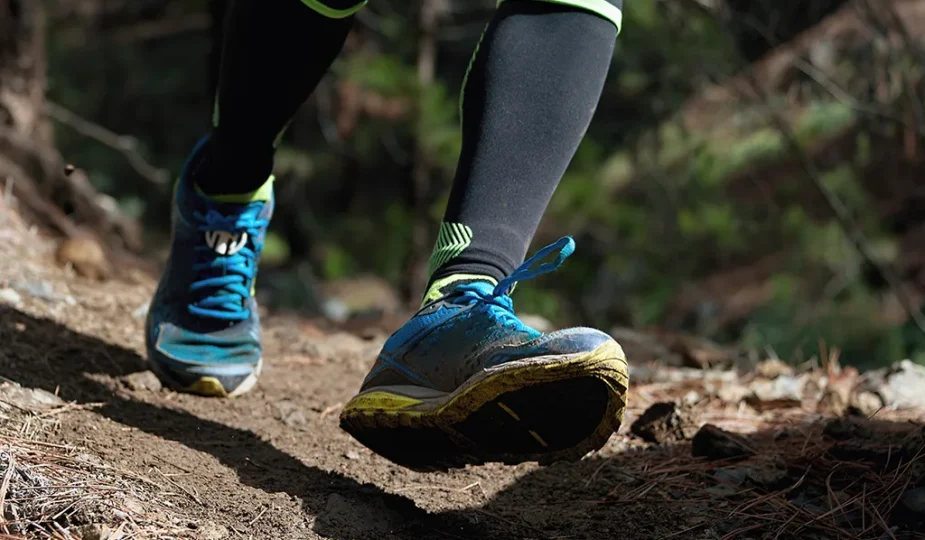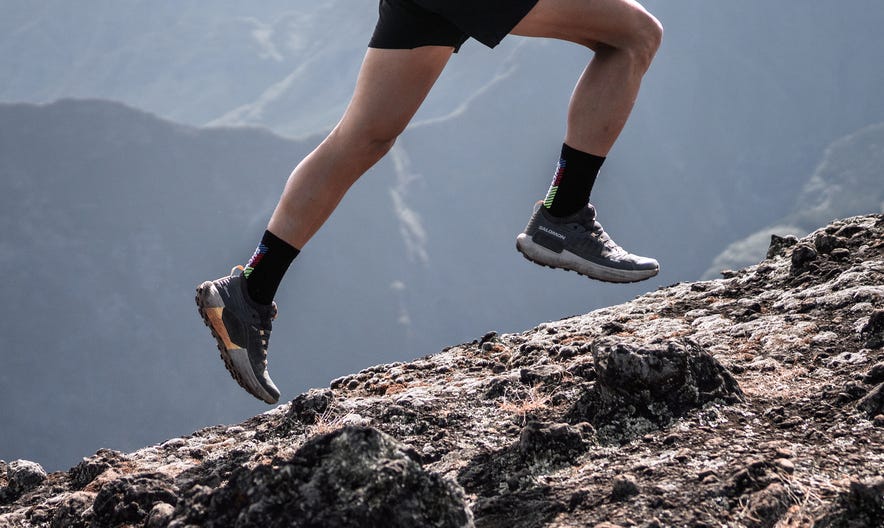
5 Tips for Choosing the Right Trail Running Shoes
Choosing the right trail running shoes is critical to preventing injury and having fun on the trails. Most runners keep a quiver of shoes in their rotation, as wearing the identical shoe for every run increases the chance of injury and prevents optimal performance. Features include traction on rugged terrain, cushioning, heel-to-toe drop and fit. These tips will help you choose the right shoes for your next run:
Know Your Foot Type
Before diving into fancy features and flashy designs, take a moment to understand your unique feet. Are you a neutral runner with balanced arches? Do you overpronate with inward-rolling ankles? It would be best if you supinated with outward-rolling ankles. Knowing your foot type is crucial for choosing the right trail running shoes. Neutral shoes offer balanced support, stability, and control of excessive pronation, and motion-control shoes address severe pronation. For supination, look for cushioned shoes that absorb impact. Be bold and visit a speciality store for expert guidance and personalized recommendations. Remember, the proper foundation sets the stage for comfortable, supported, injury-free trail runs. Utilize online resources and Hoka One One coupons to find shoes designed for your specific foot type, ensuring every step on the trail is confident.
Choosing the right shoes for trail running requires knowing what kind of runner you are. There are dozens of factors to consider. One crucial factor is the drop or difference between the heel and toe of the shoe. A higher drop can cause problems for some runners. If you have experience with different shoes, stay within the range of the drop that worked for you.
Many shoes designed for long-distance running come with a high stack height and heavy padding, which makes them effective at absorbing impact. These shoes are popular among runners who want to reduce their risk of injury, particularly older runners who have already sustained some injuries. However, more lightweight options suitable for trail running are available.

Know Your Trails
The kind of trails you run on can significantly affect your choice of shoes. Groomed trails offer a smoother, more effortless running experience and do not require as much grip as technical trails with their slick and rocky surfaces. Rugged trail runners should choose a shoe with more extended, more closely spaced lugs for more stability and traction. This is because slipping and losing your footing can lead to injury and slow you down on steep climbs and descents.
The amount of cushioning, width of the toe box, and heel-to-toe drop should also be considered when choosing a pair of trail running shoes. These factors can make or break your trail running experience, helping you dance through the techy bits and maintain your pace on steep climbs. They can also help prevent injuries and provide comfort for those long-distance runs.
Know Your Goals
It’s essential to define your goals before buying new shoes. They will help you choose the right shoe type and provide a solid framework for your training, whether improving race times or increasing weekly distances. To be successful, your goals should be SMART: Specific, Measurable, Attainable, Realistic, and Time-based.
Knowing your goals can also help you select the best trail running shoes. For example, if you plan on racing, you will want lightweight shoes with smaller and more closely spaced lugs. This increases efficiency and makes your foot feel more secure on various terrains.
On the other hand, if you’re planning on training for a marathon and need a well-rounded, rugged trail running shoe with extra cushioning, look for a heavier model that will stand up to long runs and rugged terrain. Consider getting a waterproof version of your trail running shoes, as wet feet quickly turn into cold feet. A waterproof shoe is typically a few ounces heavier per pair but can significantly affect your run comfort.

Know Your Budget
The cost of trail running shoes can play a role in the type you choose. For example, a waterproof membrane and durable upper material will add weight and price to the shoe. Likewise, adding a single-pull lace system may push the price slightly. Heel-to-toe drop (sometimes called ‘drop height’) is a matter of personal preference, although its science is still hotly debated. Generally, most runners prefer moderate drops for comfort and stability. But some prefer zero-drop designs or maximum foot flexibility.
Flexibility is essential for runners who like to ‘go off-road’ but don’t run ultra distances. Some mountain runners want stiffer shoes to inspire confidence when bounding over loose scree and uneven, sludgy terrain. Others prefer flexible shoes to help them navigate twists and turns on mellower trails and backroads.
Rugged trail running shoes tend to be pricier than their more lightweight counterparts. But they also provide excellent durability and support to keep runners strong over various lengths and terrains.
Know Your Runner
The terrain you run on will affect the type of shoe that works best for you. If you run on trails with lots of rocks, roots, and mud, trail running shoes with deep lugs provide more stability and grip than road-running sneakers.
The heel-to-toe drop, or how much the heel is raised above the toes, is another critical consideration for many runners. Runners who tend to overpronate or roll inward should look for shoes with support and control technologies such as medial posts, dual-density foams, varus wedges, and guide rails that help stabilize the foot.
When selecting trail running shoes, try them on in the evening after a long day of work and after a run. As your feet may have become swollen during this process, you must ensure that the shoes fit you perfectly even when your feet swell up. A snug but not tight fit is ideal, with enough room for toe flex, and spread-wide toe boxes are essential in helping avoid bruises or black toenails from appearing; reading reviews about a particular shoe may provide some guidance, but always remember that reviews written by others don’t give an accurate reflection of its fit on your feet is crucial.









